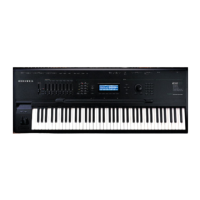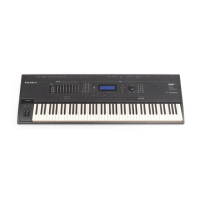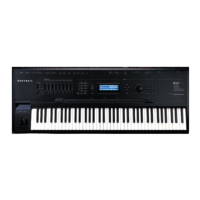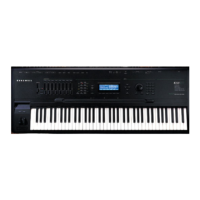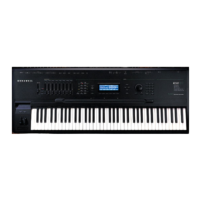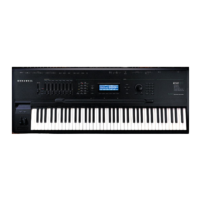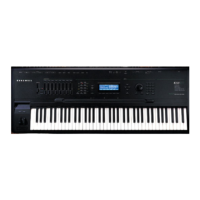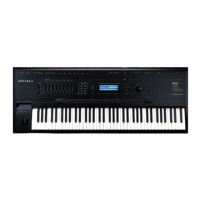DSP Functions
Hard Sync Functions
14-51
Hard Sync Functions
SYNC M AND SYNC S
These two functions appear in Algorithms 26—31, and always work in tandem. Each is a rising
sawtooth oscillator. SYNC M is the “master” waveform, and SYNC S is the “slave.” These terms
stem from the fact that the pitch (frequency) of the master waveform determines the repetition
rate, and thus the shape, of the slave’s waveform. These functions generate their own
waveforms, and do not pass the sample input through the algorithm. Consequently the PITCH
function does not appear for these algorithms.
Every time the master waveform falls from positive full scale to negative full scale, the slave
waveform is forced to negative full scale. You can create a wide variety of timbres by adjusting
the pitches of the waveforms relative to each other. This is done with the parameters on the F1
PCH and F2 PCH control input pages. F1 is for the master, and F2 is for the slave. Pitch control
is really a bit of a misnomer for the slave waveform, because its pitch is determined by the pitch
of the master waveform. The fundamental of the slave waveform is forced to be the same as
that of the master, since they always have the same frequencies, although the shapes of their
waveforms differ.
To clarify this, assume for now that the pitch of the master waveform remains constant. When
you trigger a note, both waveforms start at negative full scale. If the slave’s “pitch” control is
set to a much lower value than that of the master, the master waveform will reach positive full
scale before the slave. So the shape of the slave waveform will be that of a more slowly rising
sawtooth wave with a relatively large negative DC offset (most of the waveform will be in the
negative portion of the scale).
If the slave’s “pitch” control is set to a value only slightly lower than that of the master, the
waveforms will be very similar, and the slave waveform will have a small negative DC offset.
When the pitch settings are identical, the waveforms are identical.
If the slave’s pitch setting is higher than that of the master (which usually gives more
interesting results), the slave’s waveform will alternate between a complete sawtooth cycle and
a fraction of the subsequent cycle. At twice the frequency of the master, the waveform will have
twice the frequency, and only the even harmonics of the master frequency will be pronounced.
When the slave/master frequency ratio is nearly, but not exactly three, all harmonics will be
present, but the 3rd, 6th, 9th (all multiples of 3) harmonics will be much louder than the others.
This will sound like a resonant filter with multiple resonance peaks.
Because the pitch of the slave waveform is forced to be nearly that of the master, you can adjust
the key tracking of the slave to values less than 100 cents per key without affecting the pitch.
This will help reduce some of the harshness at the high end of the keyboard.

